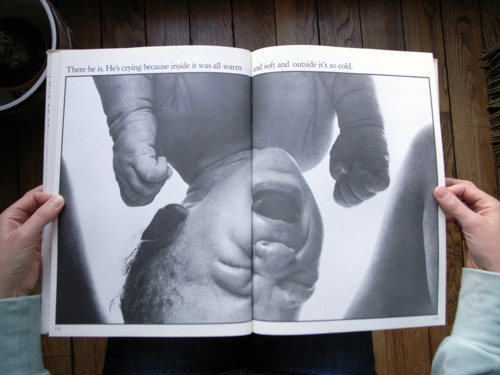
A child only accepts what he or she can comprehend, in any case, and this depends on the stage of development. Even children of preschool age react in this way.
#Will mcbride show me all pages free#
“Children who have grown up in a free and unconstrained atmosphere react positively to the photographs. The explanatory text offers further clues to how young children might perceive this book. The most obvious obstacle to this is the peculiarities of culture and I did notice the book expresses an almost blind acceptance of the validity of Freudian theory. It was also hoped that the children’s reactions to the material would be spontaneous and would give the readers a realistic idea of how their own children might react. The philosophy behind producing this book is that only an explicit and realistic presentation of sex can spare children fear and guilt related to sexuality which is why photography was chosen as the visual medium. Traditional sex education can be clinical and dry and so Fleischhauer-Hardt urges the target reader (the parents) to use simple words in the descriptions of conception, pregnancy and anatomical facts and some suggestions are offered at the end of the book. The photographic part of this book is meant as a taking-off point for parents…We hope this book will serve parents and children as a source of information and guide them toward a happy sexuality marked by love, tenderness, and responsibility.” A good understanding requires rather a continuing exchange between parent and child, a dialog which helps the child express his questions and problems concerning sex and resolve them. We don’t believe a child will have “found the answer” to sex simply by looking at the pictures in this book. But above all, we hope it will show parents that natural sexuality develops only when children are surrounded from birth onwards by a loving family and environment which does not repress sexuality. In their hands, it can be an aid to sexual enlightenment. “We have made this book for children and parents.

The temptation, since we are such visual creatures, is to skim through the images and get an impression from that, but the introduction provides an important framing for the unconventional approach this book takes. The English adaptation is by Hilary Davies. The book was a collaboration between McBride and Helga Fleischhauer-Hardt, a psychiatrist, who provided an essential context for how the book should be used. Will McBride courageously and sensitively provided the photographs that appeared in that book, Show Me!(German: Zeig Mal!) published in 1975. In the West, the Sexual Revolution went hand in hand with an acceptance of nudity and it makes sense that probably the most definitive text on sex education for children should appear during this time. Therefore, readers will begin to see examples of “comparative anatomy” appear on this site. In a healthy context, these can be a source of gentle amusement for those more experienced. There is an inherent awkwardness when children compare the superficial differences between boys and girls or between children and adults or watching inexperienced lovers fumble around as they figure things out. As creatures born with instinctive sexual proclivities that develop over time and rational minds trying desperately to cope with this reality, there is plenty of fodder for humor that does not necessarily imply shame. The legitimacy of a serious approach, though, should not exclude more humorous and light-hearted portrayals.

In many sexually-repressed societies (and we have to count the modern West among them), any begrudging acknowledgement of the need to educate young people typically takes the form of dull and clinical coverage or is authoritative and fear-based and, in both cases, offers a cartoonish approach to the facts of gross surface anatomy. I thought it appropriate that this work should be a launching point for this topic-in this case a serious example but not oppressively so. This can take serious forms as in proper (and perhaps institutionalized) sex education or in a more humorous form as children explore changes and differences in sexuality in their culture. Since Pigtails in Paint is an important venue for the healthy expression of child nudity, it makes sense that we should deal with the subject of sex education.


 0 kommentar(er)
0 kommentar(er)
